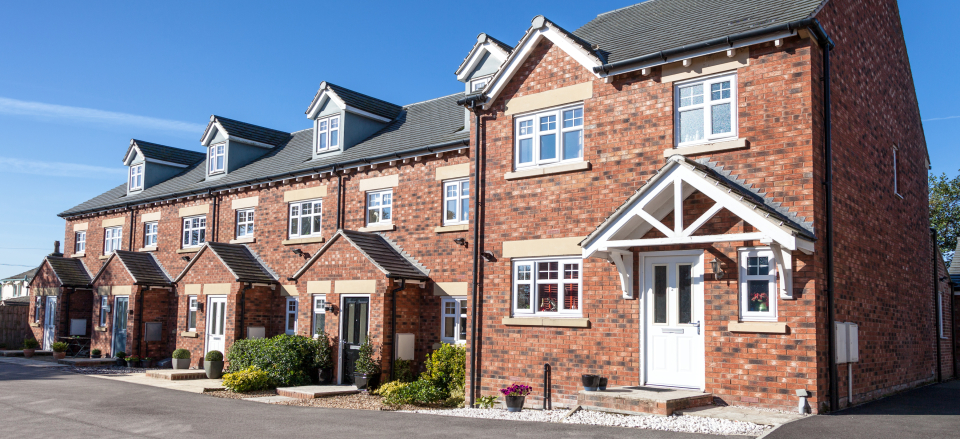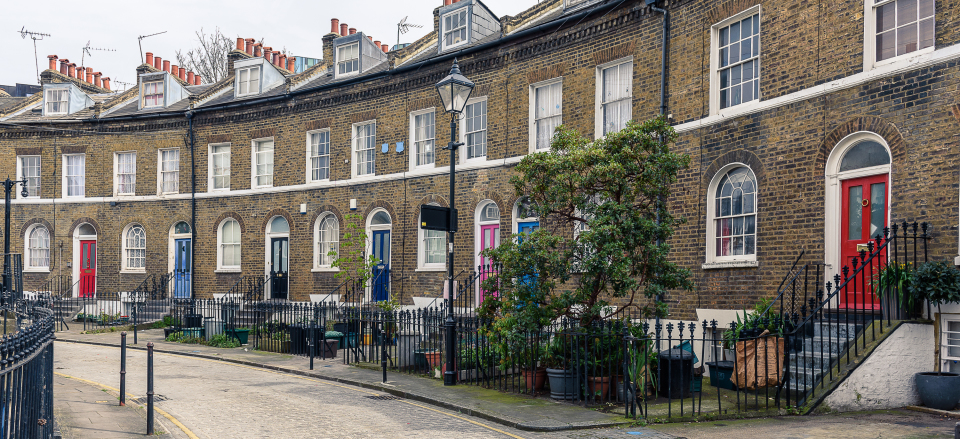Revealed: how lockdown has changed homehunters’ priorities
With the housing market back open for business, buyers and renters are re-evaluating their criteria.
More than half of homehunters have changed their priorities since the start of the coronavirus lockdown.
We surveyed more than 2,000 buyers and renters to reveal just how much their attitudes have changed since the Prime Minister, Boris Johnson, introduced strict measures on 23 March 2020.
Scroll down to find out more.
First up, what are homehunters’ appetites for moving now?
The picture looks promising. An enormous 86% of buyers and renters who intended to move home before the coronavirus crisis took hold still expect to do so.
94% of first-time buyers across the UK remain committed to moving in the next 12 months, with 13% saying the lockdown had accelerated their plans to snap up property.
However, concerns about the impact of coronavirus have hampered some people’s plans. Of those who have delayed their property search, 31% were mindful that house prices may fall, 30% were worried about the UK economy, and 22% were concerned about their employment and household income.
But of all the age groups, it’s young buyers and renters that expect to be most impacted by economic uncertainty, with 61% of under 35s citing concerns about their employment, income and getting a mortgage or deposit.
So what features are homehunters prioritising?
Perhaps unsurprisingly, the new property ‘must-have’ is an office. More than one in five of those surveyed (22%) claimed that having an office area has become more of a priority, with this increasing to 34% among those aged between 35 and 49.
Properties that are located close to friends and family (21%), and that offer the ability to do exercise at home (20%), have become more important for homehunters of all ages too.
Interestingly, proximity to pubs and shops has come in further down the ranking, with just 13% of respondents prioritising it.
The survey also revealed that one in five young homehunters (aged under 35) are more likely to strike a compromise on their criteria, such as expanding their search area in order to afford a garden. In contrast, 60% of those aged 35 and over haven’t changed their property priorities at all.
However, it is not just features that are being reassessed. Some 44% of buyers and renters whose criteria have changed now want to be closer to the countryside, parks or the coast.
What is driving the shift?
Homehunters’ change in lifestyle, and in particular the move to working from home, since the lockdown kicked in has had a major knock-on effect.
Some 34% of buyers and renters anticipate working from home more often, with 85% expecting to spend the same or fewer hours working.
The younger respondents feel the shift more acutely, with 42% of under 65s planning to work from home more often. And more than half of them will commute to work less.
Our survey revealed further lifestyle shifts, with respondents seizing the opportunity to spend more time at home and outdoors.
Tom Parker, consumer spokesperson at Zoopla, explained: “After an extensive lockdown, Brits have become accustomed to spending more time at home, as well as making the most of the outdoor space on their doorstep, which has seen many reassess their home hunting priorities.
“Many of us are now looking at going into the office less often, and socialising more with friends and family at home, instead of heading to pubs and restaurants.
“Meanwhile, spending time in the garden at the weekend looks like the more appealing option for those keen to avoid public spaces like shopping centres and cinemas. This should lead to a positive resetting of the work-life balance of many and, from a buyer perspective, place a new focus on finding a home to accommodate these lifestyle changes.”
Demand for new build homes rockets 66%
Our analysis shows interest in newly-built properties has bounced back to a higher level than before coronavirus struck.
Demand for new build homes has soared by 66% since the housing market reopened, surpassing levels seen before lockdown.
The upsurge seen in the six weeks since 13 May is a continuation of the trend recorded at the start of 2020, when the new build market enjoyed its strongest start to the year since 2016.
Persimmon Homes, one of the UK’s largest home builders, has seen a massive 215% month-on-month jump in demand through Zoopla buyer leads during the past six weeks. Leads are generated by buyers requesting more information from home builders via property listings.
The recovery in the new build homes sector significantly outpaces the revival in the market for older properties, where demand is currently 46% higher than before lockdown.
The surge in demand for new build properties has been particularly strong among first-time buyers, growing by 87% compared with levels during lockdown.
Alex Rose, director of New Homes at Zoopla, said:
“While the industry has undergone an unprecedented period, the new homes market has shown itself to be geared towards a rapid rebound.”
Why is this happening?
The resilience of the new build market is likely to be down to two factors.
On the one hand, developers are used to having to sell homes when physical viewings are not possible.
Mark Cook, group sales and marketing director at Persimmon Homes, said:
“Our experience in offering virtual viewings, exceptional computer-generated imagery (CGI), and understanding what it takes to sell off-plan, enabled us to sustain demand, even when the market was suspended at the height of the lockdown.”
At the same time, demand is also likely to have been supported by the fact that the Help to Buy scheme can only be used to purchase a new build property.
With many lenders withdrawing their 90% and 95% loan-to-value (LTV) mortgages in the face of the pandemic, more first-time buyers in particular are likely to be turning to the scheme in a bid to get onto the property ladder. The Help to Buy initiative tops up a 5% deposit with a five-year interest-free loan worth 20% of the property’s value
Who does it affect?
The North East has seen the strongest rise in demand, with interest in new build homes soaring by 139% since lockdown was lifted.
The West Midlands is not far behind with a rebound of 121%, followed by the East Midlands at 108%.
Wales recorded a 74% jump in demand in the six weeks to 21 June, despite the fact the market did not reopen until 22 June. Meanwhile, Scotland recorded a 33% in demand, even though the market remained closed until 29 June.
What’s the background?
First-time buyers are often described as being the lifeblood of the housing market, so it's good news for the new build sector that demand is so strong among this group.
Going forward, Rose expects the initial spike in demand for new properties seen since the housing market reopened to 'settle' as the summer progresses and sales are agreed.
“First-time buyers will no doubt uphold a level of demand, with many keen to make the most of Help to Buy, following the withdrawal of many 90% LTV mortgage products,” he says.
Our research comes as Prime Minister Boris Johnson unveiled plans for more than 180,000 new affordable homes to be built. He also announced changes to the planning system to make it easier to convert commercial buildings into residential ones, and to demolish vacant buildings and use the land to build homes.
Property owners will also be able to build additional space above their properties through a fast-track approvals process.
Top three takeaways
- Demand for new build homes has soared by 66% since the property market reopened, surpassing levels seen before lockdown
-
The upsurge seen in the six weeks since May 13 continues the trend recorded at the start of 2020, when the new build market enjoyed its strongest start to the year since 2016
-
The recovery in the new build homes sector significantly outpaces the revival in the market for older home, where demand is currently 46% higher than before lockdown
Q&A: what's next for the housing market?
We talk to Richard Donnell, about where the market is right now and what he expects to happen in the months ahead.
Q. Richard, is the housing market now open across the UK?
A. Yes. For the first time since March, the housing market is largely open, with only some restrictions remaining. This means that most buyers and sellers in all parts of the UK can now proceed with their moving plans.
Q. What does that mean for activity levels?
A. Activity in the market has risen strongly. Buyer demand across the UK is now 46% higher than pre-lockdown levels, a large jump given the wider economic landscape.
One day after the market opened in Wales on 22 June, we saw buyer demand there bounce up by 41%. So the market is busy with buyers progressing with purchases that they put on hold during lockdown.
We may also be seeing a new cohort of buyers who weren’t planning to move before lockdown, but who are now reviewing where and how they are living, and deciding to make a move.
This is now feeding into higher sales levels, with the number of home sales agreed up 4% compared to 1 March.
In the rental market, we have also seen tenant demand and tenancies agreed rise strongly over the last seven weeks. Rental activity is now higher than at this stage of the year in 2019 and 2018.
Q. Demand has risen, but what about the supply of homes for sale and for rent?
A. Although the number of home listings for sale and rent have risen in recent months, it is still down 15% compared to this point last year.
This lower level of supply, coupled with strong levels of demand, is underpinning pricing at present. Would-be sellers who enter the market now will be able to take advantage of this stronger demand.
Q. What’s next for the housing market?
A. We expect demand levels to remain strong in the coming months, although there will likely be some moderation.
In terms of house prices, we expect the annual rate of house price growth to remain around 2-3% until approximately the end of September 2020.
However, the cloudier outlook for the economy may start to pull house prices down towards the end of the year and into 2021.
In the rental market, rents remain relatively steady with year-on-year growth at around 1.5%. But rental growth is lower in London as more supply has come onto the market with landlords of short-let properties now looking to agree longer rental periods, and entering into the long-let market.
Q. What other factors are likely to influence the market in the coming months?
A. In the sales market, the availability of mortgage finance, especially for those who have smaller deposits, will have a bearing on the market.
Likewise, unemployment levels are set to rise, which could put a further dampener on demand, reflecting the more challenging economic conditions throughout the country.
However, the government has pushed for strong measures to support both the housing market (such as mortgage payment holidays) and the wider economy. More support for the market from the government can’t be ruled out.



